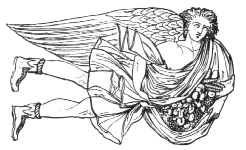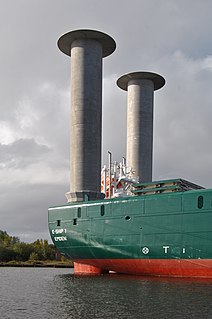
In Greek mythology, Astraeus or Astraios was an astrological deity. Some also associate him with the winds, as he is the father of the four Anemoi, by his wife, Eos.

The Four Heavenly Kings are four Buddhist gods, each of whom is believed to watch over one cardinal direction of the world. In Chinese mythology, they are known collectively as the "Fēng Tiáo Yǔ Shùn" or "Sì Dà Tiānwáng". In the ancient language Sanskrit, they are called the "Chaturmahārāja" (चतुर्महाराज) or "Chaturmahārājikādeva": "Four Great Heavenly Kings". The Hall of Four Heavenly Kings is a standard component of Chinese Buddhist temples.
The practice of astrology recognizes four cardinal signs of the zodiac: Aries, Cancer, Libra, and Capricorn — sometimes called reacting signs. It associates those people born "under" one of these with certain human behaviors and traits.
In Norse mythology, Norðri, Suðri, Austri and Vestri are four dwarves in the Prose Edda book Gylfaginning who each support one of the four cardinal points. Together, they uphold the heavenly dome, created from the skull of the jötunn Ymir. They probably represent the four winds, corresponding to the four stags of the cosmic tree Yggdrasil.

A rotor ship is a type of ship designed to use the Magnus effect for propulsion. The ship is propelled, at least in part, by large powered vertical rotors, sometimes known as rotor sails. German engineer Anton Flettner was the first to build a ship that attempted to tap this force for propulsion, and ships using his type of rotor are sometimes known as Flettner ships.

In ancient Greek religion and myth, the Anemoi were wind gods who were each ascribed a cardinal direction from which their respective winds came, and were each associated with various seasons and weather conditions. They were the progeny of Eos and Astraeus.
The Cosmopterigidae are a family of insects in the order Lepidoptera. These are small moths with narrow wings whose tiny larvae feed internally on the leaves, seeds, stems, etc. of their host plants. About 1500 species are described. The taxonomic family is most diverse in the Australian and Pacific region with about 780 species.
The euro is the official currency of the European Union.
In Greek mythology, Thyia was a female figure associated with cults of several major gods.
Auster was, in Roman mythology, the embodiment of the sirocco wind who brought heavy cloud cover and fog or humidity.. It can be used to refer to any wind from the south.

Doughboy Park is a 1.71-acre (6,900 m2) New York City public park in the Woodside neighborhood of Queens. It is located on a hilly parcel of land between Skillman Avenue and Woodside Avenue, and between 54th Street and 56th Street.
Otonoma is a genus of moth in the family Cosmopterigidae.
Otonoma sphenosema is a moth in the family Cosmopterigidae. It is found in Australia, where it has been recorded from Queensland.
Otonoma leucochlaena is a moth in the family Cosmopterigidae. It was described by Edward Meyrick in 1919. It is found in Australia, where it has been recorded from Queensland.
Otonoma sophronica is a moth in the family Cosmopterigidae. It was described by Edward Meyrick in 1920. It is found in Australia, where it has been recorded from Queensland.




